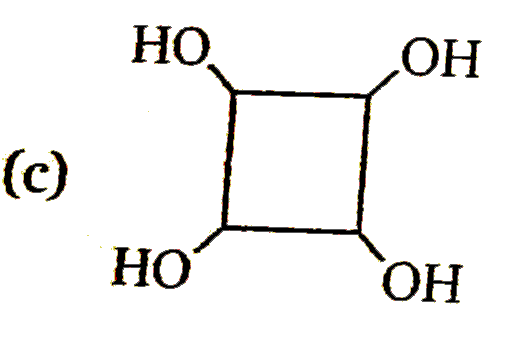What will be the mass percentage of aspirin (C9H8O4) in acetonitrile (CH3CN) when 6.5 g of C9H8O4 is dissolved in 450 g of CH3CN ?
2.848%
1.424%
14.24%
28.48%
The correct Answer is:B
To find the mass percentage of aspirin (C₉H₈O₄) in acetonitrile (CH₃CN), we can follow these steps:
Step 1: Identify the mass of aspirin and acetonitrile
- Mass of aspirin (C₉H₈O₄) = 6.5 g
- Mass of acetonitrile (CH₃CN) = 450 g
Step 2: Calculate the total mass of the solution
The total mass of the solution is the sum of the mass of aspirin and the mass of acetonitrile.
Total mass of solution=mass of aspirin+mass of acetonitrile
Total mass of solution=6.5g+450g=456.5g
Step 3: Use the mass percentage formula
The formula for mass percentage is given by:
Mass percentage=(mass of solutetotal mass of solution)×100
Here, the solute is aspirin.
Step 4: Substitute the values into the formula
Now, we can substitute the mass of aspirin and the total mass of the solution into the formula:
Mass percentage of aspirin=(6.5g456.5g)×100
Step 5: Calculate the mass percentage
Now, calculate the value:
Mass percentage of aspirin=(6.5456.5)×100≈1.424%
Final Answer
The mass percentage of aspirin in acetonitrile is approximately 1.424%.
---
- Mass of aspirin (C₉H₈O₄) = 6.5 g
- Mass of acetonitrile (CH₃CN) = 450 g
The total mass of the solution is the sum of the mass of aspirin and the mass of acetonitrile.
The formula for mass percentage is given by:
Now, we can substitute the mass of aspirin and the total mass of the solution into the formula:
Now, calculate the value:
The mass percentage of aspirin in acetonitrile is approximately 1.424%.
Topper's Solved these Questions
- SOLUTIONS & COLLIGATIVE PROPERTIES BOOK - NARAYNACHAPTER - SOLUTIONS & COLLIGATIVE PROPERTIES EXERCISE - EVALUATE YOURSELF - 2
5 Videos
- SOLUTIONS & COLLIGATIVE PROPERTIES BOOK - NARAYNACHAPTER - SOLUTIONS & COLLIGATIVE PROPERTIES EXERCISE - EVALUATE YOURSELF - 3
5 Videos
- SOLUTIONS & COLLIGATIVE PROPERTIES BOOK - NARAYNACHAPTER - SOLUTIONS & COLLIGATIVE PROPERTIES EXERCISE - EXERCISE : 4
26 Videos
- SOLID STATESBOOK - NARAYNACHAPTER - SOLID STATESEXERCISE - EXERCISE-4
18 Videos
- SURFACE CHEMISTRY BOOK - NARAYNACHAPTER - SURFACE CHEMISTRY EXERCISE - EXERCISE - 4
22 Videos
Similar Questions
Knowledge Check
C6H5−O−CH3 is named as :
AphenoxymethaneBmethoxybenzeneCanisoleDmethyl phenyl etherSame mass of glucose (C6H12O6) and acetic acid (CH3COOH) contain:
Asame number of carbon atomsBsame number of hydrogen atomsCsame number of oxygen atomsDall of the aboveWhen 20g of a compound (A) (M.F.=C4H10O4) reacts with excess of CH3MgBr, 14.6 L of CH4 is obtained at STP. What is structure formula of (A) ?
ACH2−OH|(CH−OH)2|CH2−OHB CH2OH |HO−CH2−C−CH2OH | OHC DBoth (a) & (b)
DBoth (a) & (b)
Calculate the mass percentage of aspirin (C9H8O4) in acetonitrile (CH3CN) when 6.5 g of C9H5O4 is dissolved in 450 g of CH3CN .
View SolutionCH4,C2H6,C3H8,CaCO3
View SolutionCH4,C2H6,C3H8,CaCO3
Find the Odd one out.
View SolutionSuggest the most important type of intermolecular interaction in the following pairs :
(v) Acetonitrile (CH3CN) and acetone (C3H6O).
View SolutionAspirin, C9H8O4, is prepared by the acetylation of salicylic acid, C7H6O3, according to the following equation :
C7H6O3+(CH3CO)2O→C9H8O4+CH3COOH
If the yeild of this reaction is 83%, What mass of salicylic acid would be required to prepare 1.0kg of aspirin?
View Solution
